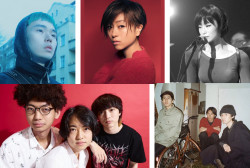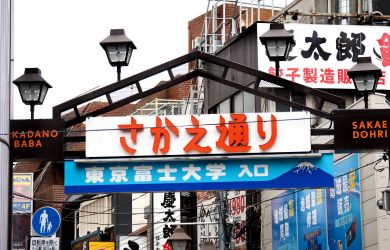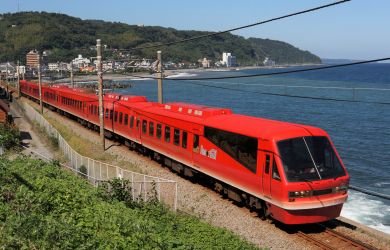
Originally published on metropolis.co.jp on August 2010

Photos by Rob Gilhooly
Japanese tourists have earned themselves a reputation for turning up in some of the most far-flung and obscure spots on the planet, but there are some places that they’re unlikely to want to visit. And if they did, they’d be eyed with a fair amount of hostility.
To Japanese, the barren islands between Honshu and the Korean peninsula are known as Takeshima—but don’t utter that word around here. The locals call them Dokdo, and they’re pretty possessive about these rocky islets.
The feud over who “owns” this pair of islands has simmered for generations, and will no doubt continue for decades to come. However, the reality is that a special South Korean police unit is stationed in reinforced quarters on the peak of Dongdo, the more easterly island, while an elderly Korean fisherman and his wife live in a house built into the rock face of Seodo, across the narrow channel of water that separates them.

Life on the islands is a challenge, even on pleasant days in the Sea of Japan—which Korea insists on calling the East Sea (yet another bone of contention). Just getting to this lonely spot can be tricky, and there are no guarantees that visitors will even be able to go ashore.
The Sun Flower is a smart-looking ferry that rides low in the water as it pulls out of the industrial port of Pohang, past freighters and a South Korean Coast Guard patrol ship. The sea is calm and we quickly kick up a wake as the captain puts the vessel on course for our first destination.
All ferries to Dokdo put in at the narrow harbor of Dodong town on Ulleungdo. The scenes are chaotic as tourists are disgorged onto the concrete wharf to find restaurants or, if they’re staying overnight, accommodation. Local residents returning from a periodic trip to the mainland carry huge bundles of goods that are difficult to find on this outpost.
The guidebook from the local tourist office informs me that Dokdo is precisely 87.4 km to the east. Though much larger than its near-neighbor, Ulleungdo is a similarly craggy rock that rises steeply out of the sea. Locals are proud that Dokdo can be seen on the horizon—albeit from the highest point on the island, and only in optimum conditions. That’s about twice a year, they admit.
After the Sun Flower has had time to unload its cargo and take on the hardy souls who are making the pilgrimage on to Dokdo, it puts out to sea again. The water is noticeably choppier now, and the wind has shifted. The captain says it may not be possible to land at the dock built into the base of Dongdo, sending up a muted groan from the tourists, but we continue onward.
Dokdo reveals itself gradually through the haze, and it’s quickly apparent that we won’t be going ashore: waves are crashing into the dock and washing well up the stony beaches. So instead of setting foot on an island whose value is primarily symbolic—at least until gas or oil deposits are found nearby—the Korean tourists all get out on the deck and have to content themselves with taking photos or video of their day out at Dokdo.
Thousands of pure-white seagulls hover above and dive for fish. We cruise around to the north of the island, from where the lighthouse and police facilities, including a helicopter landing pad, are clearly visible. Sea stacks and arches have been carved by the elements.

The captain says that the best time of year to visit is May, when there is a far higher likelihood of the ship being able to dock. Once ashore, visitors have around 40 minutes, and apparently spend most of that time collecting rocks to take home (if they continue to do this in sufficient numbers, the islets will eventually disappear, solving the territorial dispute for good). They also take photos, of course, including of the stone plaque set into the wharf which declares the islands to be sovereign Korean territory.
Visitors aren’t permitted to climb the stone steps up from the landing stage to the lighthouse—a route that passes the graves of a number of seamen killed in these waters, as well as a postbox and a South Korean flag cast in concrete.
The ferry service to Dokdo was only started in early 2005, and was initially limited to 200 visitors a day. That figure has since been increased, as South Korea looks to bolster its claim to the islands. Back on Ulleungdo on our return trip, where we are obliged to take another break in the voyage, an elderly man in a shirt that says “Dokdo is Korean!” purses his lips when asked if he remembers seeing any Japanese tourists on the islands. He shakes his head.
Trip Tips
The only way to reach Dokdo is by ferry from the mainland ports of Mukho and Pohang, usually with a stop-off at the island of Ulleungdo. The first leg of that journey takes either 2hrs, 20min or 3 hours, depending on which ferry you catch, and the second stretch is a further 90 minutes. The fare for the full return trip is W94,000 (¥6,715). The Korea Tourism Organization has further details about visiting the islands at http://meturl.com/dokdo, and tourist information is available within South Korea at 82-2-1330.







